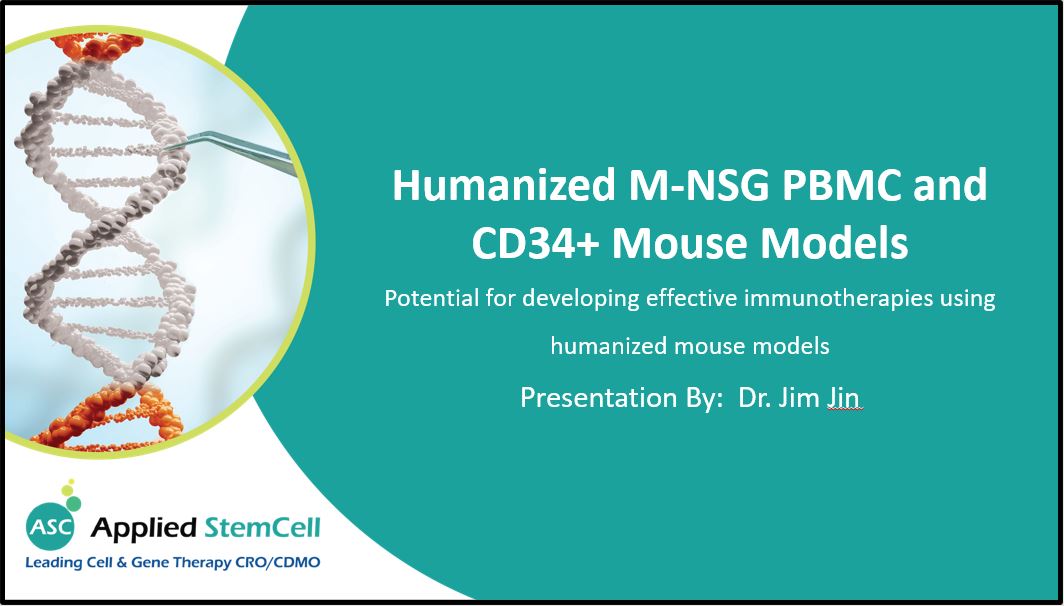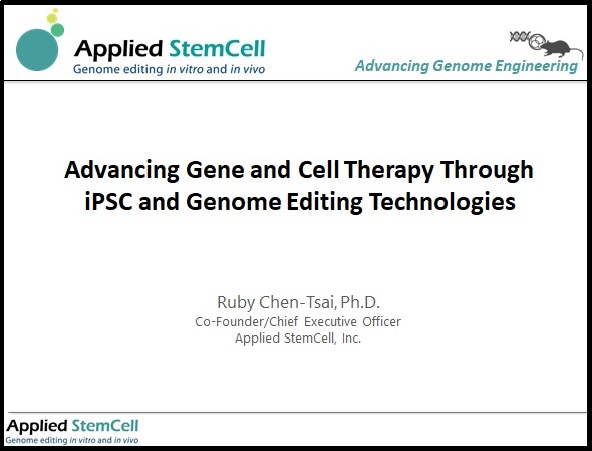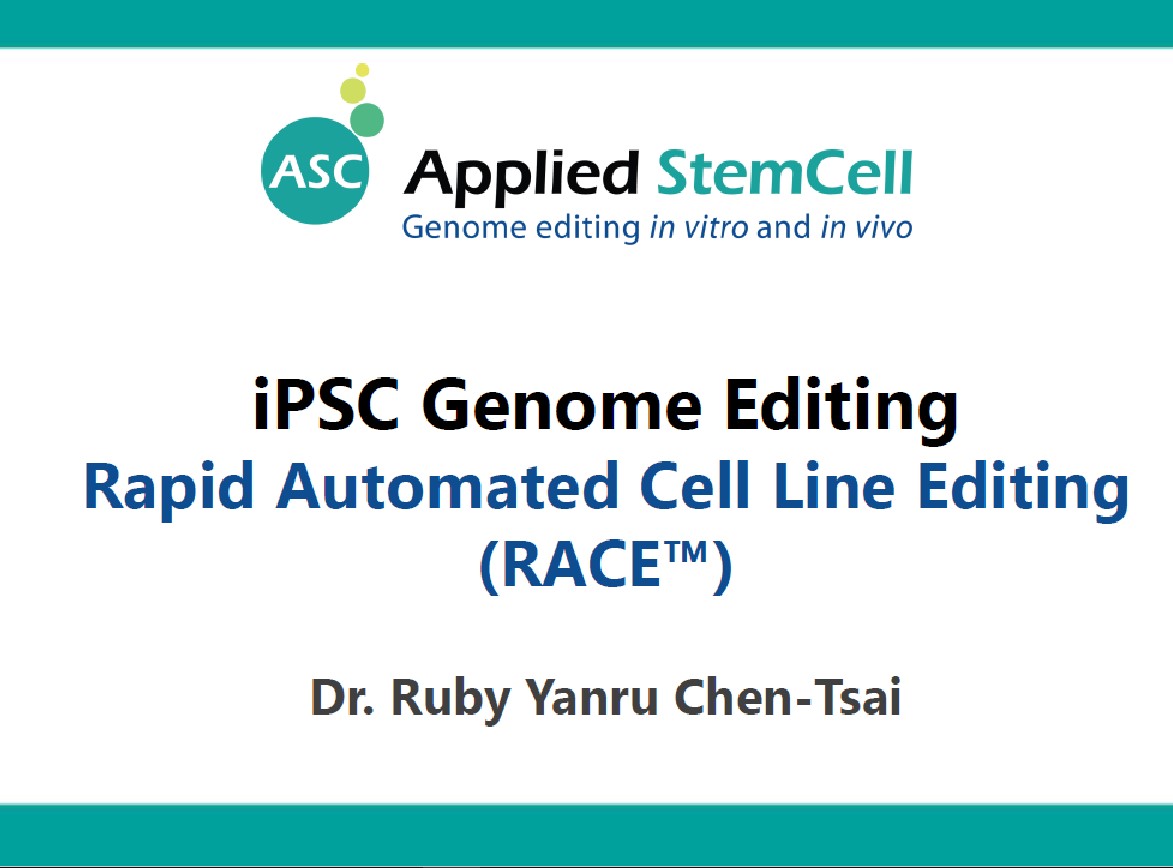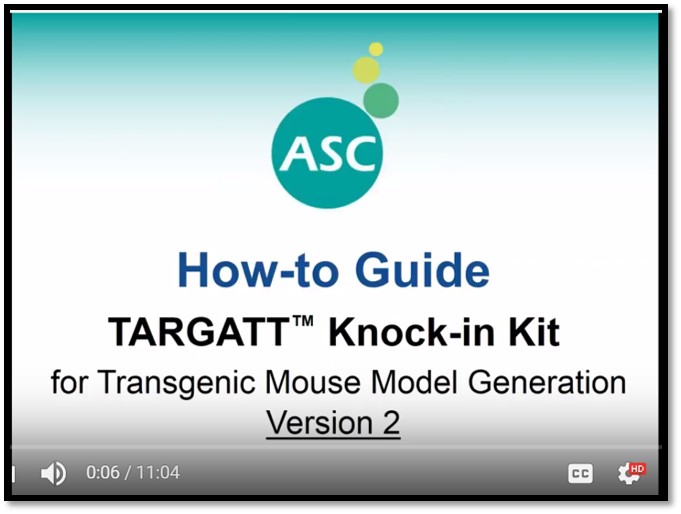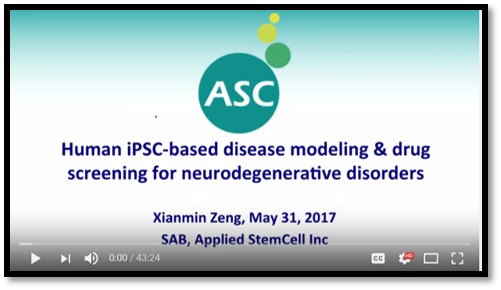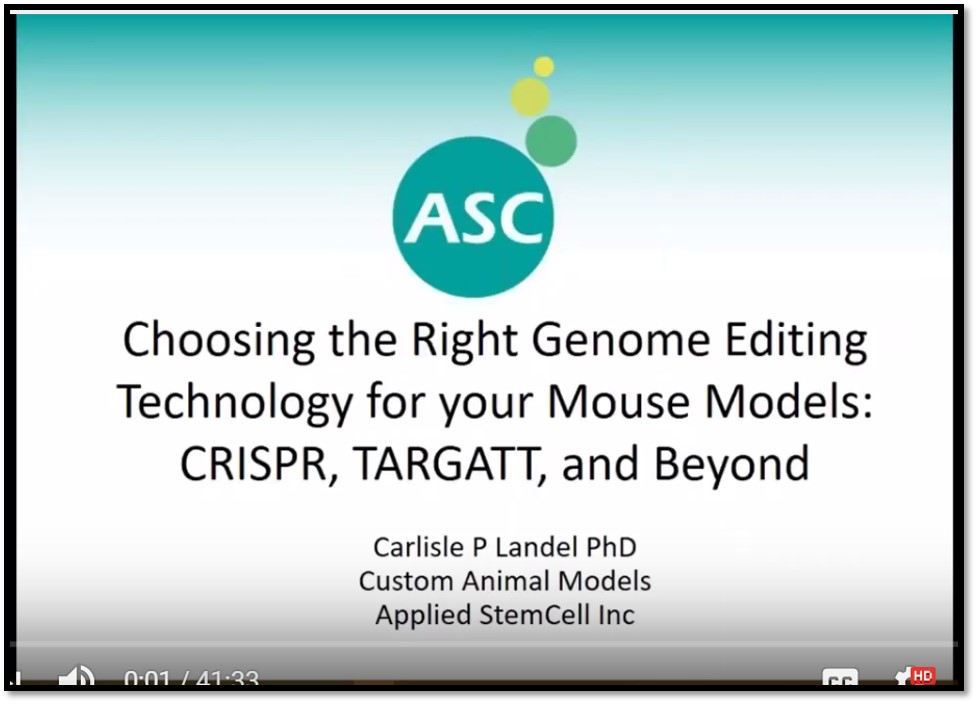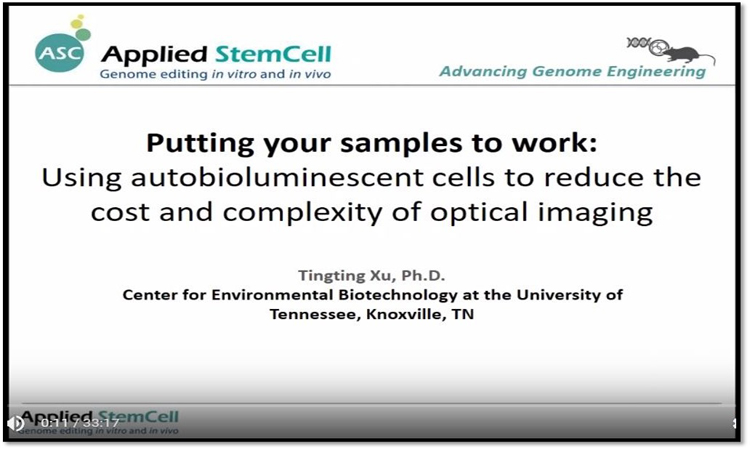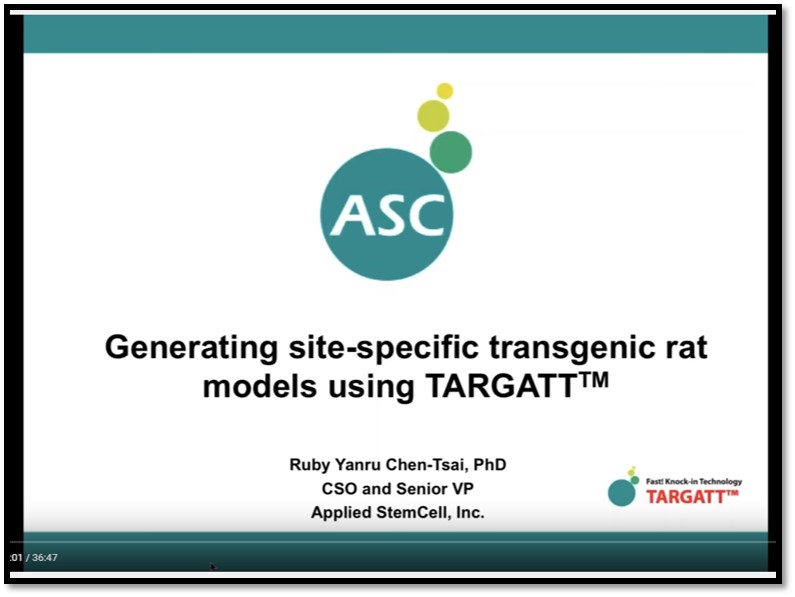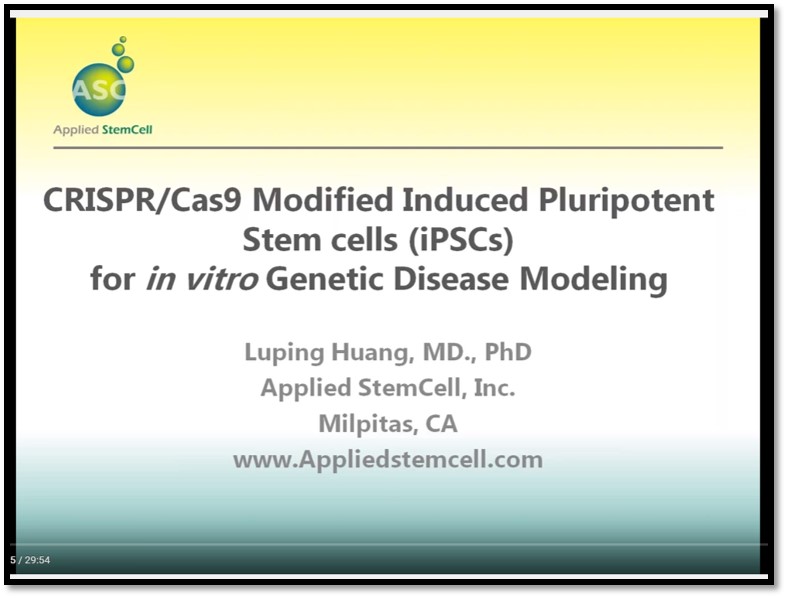Newsletter
Webinars
Humanized M-NSG PBMC and CD34+ Mouse Models 2023
Applied StemCell now supplies research-ready humanized PBMC and CD34+ reconstruction mouse models ideal for infectious disease, gene therapy, hematopoiesis, drug target, and immunogenicity studies. Our humanized models are generated using our M-NSG mice through the injection of healthy human donor peripheral blood mononuclear cells (PBMCs) or CD34+ hematopoietic stem cells (HSCs). After a few weeks of reconstruction following the injection of PBMCs or CD34+ HSCs, the mice develop a human-like immune system and are ready to be shipped.
Topics covered in this video:
• The important role of our specific immune deficient M-NSG mice in research
• Overview of humanization approaches using PBMCs and HSCs
• Discussion of the use of our specific immune deficient M-NSG mice
• Applications of humanized mice in immuno-oncology research
• Potential for developing effective immunotherapies using humanized mouse models
Advancing Gene and Cell Therapy Through iPSC and Genome Editing Technologies
Applied StemCell's brings its several years of experience and expertise in genome editing and stem cell technologies to provide custom service to advance preclinical stage gene and cell therapy projects. From generating preclinical proof-of-concept cell line and animal models and assay development, to potency, efficacy and safety assessments, all the way to CMC consultation for vector and cell line manufacturing, Applied StemCell’s technology platforms will pave the way for a smooth screening of your cell and gene therapy candidates to enable IND-filing.
Topics covered in this video:
• Quality management and data security
• Focus areas in cell and gene therapy: preclinical, clinical and manufacturing
• ASC’s Core technology and positioning as a cell and gene therapy CRO
• Gene therapy and preclinical assay development capabilities: model generation, optimizing constructs, efficacy studies, AAV infectivity, potency assay, toxicology studies, and stability
• iPSCs for assay development: patient-derived cells, iPSC gene editing, iPSC differentiation, drug efficacy and toxicity screening
• COVID 19 support: Humanized ACE2 mouse model for SARS-CoV2 research and therapeutic development
TARGATT™ Rapid and Efficient Transgene Integration Technology: Stable Cell Line Development and Generation of Large Mammalian Cell-based Screening Libraries
Applied StemCell's TARGATT™ site-specific transgene knockin technology provides a very efficient platform for stable cell line generation and for mammalian cell-based library screening. Based on our very successful TARGATT™ transgenic mouse model generation platform, the TARGATT™ cell line generation involves the generation of TARGATT™ Master Cell Lines that are engineered to carry an integrase recognition landing pad, "attP" in a preselected, intergenic, safe harbor locus. The TARGATT™ integrase then mediates a unidirectional recombination between the attP sites in the cell line and attB sites on the donor plasmid to integrate the gene of interest into the specified locus with very high efficiency (which translates to library sizes) and more importantly only one copy of the gene is inserted.
Topics covered in this short video:
- Importance of mammalian screening libraries and advantages of integrase for transgene insertion
- TARGATT™ technology for site-specific gene knockin
- TARGATT™ Master Cell Line for transgene knockin
- Evaluation of various docking site (landing pad) loci for high level protein expression
- Expression of a Fc fusion protein
- Potential applications for the TARGATT™ mammalian library screens
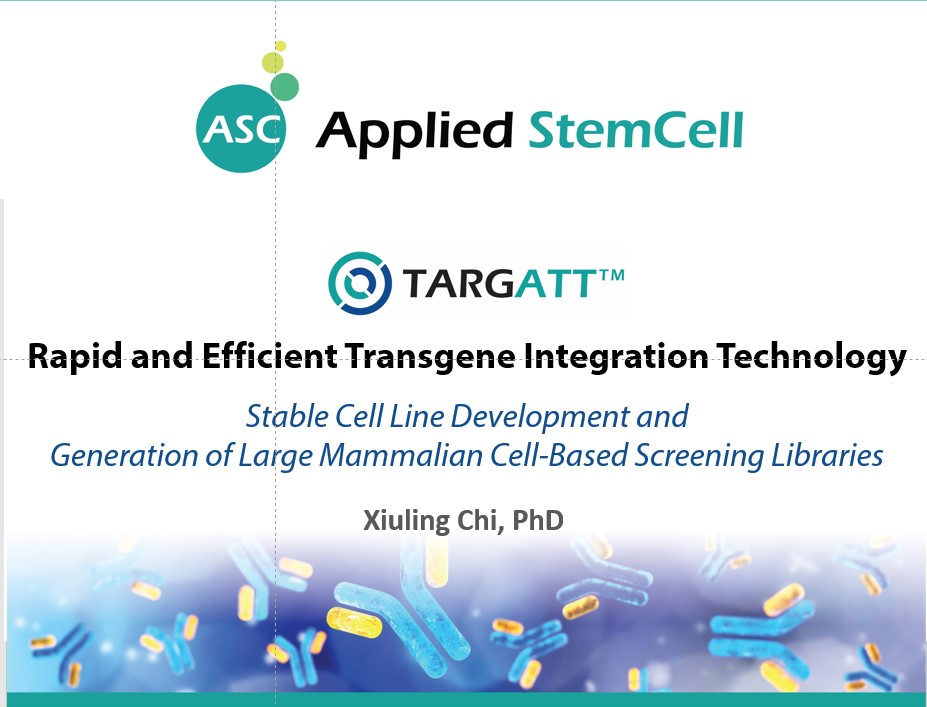
iPSC Genome Editing Rapid Automated Cell Line Editing (RACE™)
This short webinar highlights Applied StemCell’s (ASC) highly acclaimed, stem cell genome editing service to generate physiologically relevant in vitro models using iPSCs and CRISPR/ Cas9. The video showcases our ability to induce or correct mutation with standard genetic modifications (such as knockout, knock-in, and point mutation) as well as complex genome engineering such as gene fusion. Furthermore, our high throughput automated process enables higher volume projects, better picking accuracy, reduced hands-on time and errors leading up to 60% faster project timelines and 98% success rate. Applied StemCell also offers master cell lines with proven genome editing and differentiation capacity, and downstream differentiation to many cell lineages.
Topics covered in this short video:
- Integrated end-to-end-solutions for iPSC related projects
- Isogenic cell line model development
- High throughput genome editing with automation and workflow optimization
- Examples of gene modifications in patient and healthy iPSCs
- Downstream differentiation to various lineages
How-to Guide for TARGATT™ Transgenic Kit, by Dr Ruby Chen-Tsai
The TARGATT™ Transgenic Kit is designed to create site-specific knock-in transgenic mice at a defined chromosomal locus in a more efficient and significantly faster way over traditional methods. Generating transgenic mice by conventional methods (e.g. pronuclear microinjection or lentiviral injection) has following limitations, first of which is random insertion of the transgene. Random insertion of a transgene results in position effect where either the transgene is prone to silencing or endogenous gene expression is disrupted. Secondly, transgenes can be inserted as multiple copies, resulting in instability at the insertion locus. Using our proprietary site-specific DNA integration system, TARGATT™, combined with our genetically engineered TARGATT™ mice (strain code 549), you can generate your desired trangenic mouse models with guaranteed gene expression in as little as three months.
This video gives a step-by-step overview on how to use the TARGATT™ Trangenic Kit and the TARGATT™ technology to generate site-specific knock-in mouse models.
Human iPSC-based Disease Modeling & Drug Screening for Neurodegenerative Disorders
Human induced pluripotent stem cell (iPSC) technology offers the benefits of a cell line coupled with the advantage of using human primary cells. Additionally, iPSCs are also amenable to genome editing, and engineered iPSCs and their isogenic control lines can be terminally differentiated into cells of multiple lineages. This presents an almost limitless access to relevant and predictive disease models for basic research, drug discovery, toxicity screening and hopefully for regenerative cell therapy. In this webinar, we will elaborate on a panel of iPSC lines engineered for neurotoxicity assays and disease modeling. The cell lines in this panel include: 1) control lines, 2) patient-specific lines, 3) lineage-specific knock-in reporters, 4) isogenic controls of single and double knock-outs. We have also established scalable protocols for generating differentiated cells in an assay ready format. This talk will focus on the utility of these lines for neurotoxicity assays, including assays to determine the specificity of different neural cell types for a small range of chemicals and drugs from the Tox21 library, as well as for neuroprotective assays with dopaminergic neurons.
Highlights of this webinar:
- Overview of iPSC genome editing and differentiation technology
- Panel of engineered iPSCs for neurotoxicity assays
- Neural differentiation and neurotoxicity/ neuroprotection screening assays
- FAQs
Choosing the Right Genome Editing Technology for Your Mouse Models: CRISPR, TARGATT™ and Beyond...
Highlights of this Webinar:
- Overview on available genome editing technologies in generating mouse models.
- Pros and cons of each technology
- Examples of animal and cell models generated by CRISPR and TARGATT™
- Next generation genome editing tools?
Using autobioluminescent cells to reduce the cost and complexity of optical imaging
Autobioluminescent cells use a genetically encoded synthetic luciferase cassette to continuously produce a bioluminescent signal without the need for extracellular stimulation. By encoding both a luciferase protein, as well as a short synthetic pathway capable of transforming natural intracellular products into luciferin substrates, these cells can self-modulate their bioluminescent production in response to metabolic activity levels, or autonomously enact their bioluminescent phenotype in response to intra- or extracellular events. The use of this self-directed approach to bioluminescent imaging improves upon traditional reporters such as firefly luciferase (luc) by negating the need for light activating chemical substrate addition, which reduces the cost of performance while simultaneously increasing the amount of data that can be obtained per run. This eliminates the need for sample destruction or any investigator interaction, allowing for ultra-simplistic, low-cost bioluminescent screening using existing optical imaging equipment. This webinar will discuss the capabilities and uses of autobioluminescent cells for improving existing bioluminescent imaging workflows and for developing new workflows that leverage the autonomous signal generation phenotype to gather data not available from traditional optical imaging reporter platforms.
Highlights of this webinar:
- An introduction to autobioluminescence
- Autobioluminescent vs. bioluminescent imaging
- Using autobioluminescence for in vitro applications
- Using autobioluminescence for in vivo applications
- Autobioluminescent expression in stem cells
- Conclusions
Generating Site-specific Transgenic Rat Models using TARGATT™
This webinar introduces the TARGATT™ integrase based technology for generation of transgenic rats. The TARGATT™ platform enables very efficient insertion of large fragment DNA into a preselected, transcriptionally active locus in the rat genome. The webinar also discusses the advantages of generating transgenic rat models using this technology and the various applications that these rat models can be used in.
Highlights of the talk:
- Introduction to TARGATT™ integrase based technology
- How TARGATT™ technology is used to generate large fragment knock-in animal models
- Advantages of using TARGATT™ for site-specific knock-in compared to other gene editing technologies
- How we generate transgenic rat models using the TARGATT™ platform
TARGATT™ and CRISPR/Cas9 modified induced pluripotent stem cells (iPSCs) for in vitro genetic disease modeling
Applied StemCell is one of the prominent providers of gene editing services to generate transgenic animal and cellular models for researchers in academia and industries. This recorded presentation showcases Applied StemCell's achievements with using CRISPR/ Cas9 and its proprietary TARGATT™ gene editing technologies to modify induced Pluripotent Stem Cells (iPSCs). The webinar also explains the need for better models of human diseases and the advantages of using of genetically engineered iPSCs as in vitro models for genetic disease modeling. With examples and case studies, we describe how we optimize protocols to improve efficiency and are able to provide high quality service for generating iPSC disease models.
Highlights of this talk:
- Current trends in genetically modified iPSCs as disease models
- ASC's complementary technology platforms (CRISPR & TARGATT™) used for generating site-specific, genetically modified iPSC models
- Advantages of using genetically modified iPSCs and bottlenecks in gene editing of iPSCs
- ASC's upgraded protocols for high efficiency gene editing in iPSCs
- Examples of gene modification from patient/ healthy individual derived iPSCs
TARGATT™ Webinars:
![]() TARGATT™: A Mammalian System for Antibody/ Protein Library Screening
TARGATT™: A Mammalian System for Antibody/ Protein Library Screening
![]() How-to Guide for TARGATT™ Transgenic Kit
How-to Guide for TARGATT™ Transgenic Kit ![]() Choosing the Right Genome Editing Technology for Your Mouse Models: CRISPR, TARGATT™ and Beyond...
Choosing the Right Genome Editing Technology for Your Mouse Models: CRISPR, TARGATT™ and Beyond...



